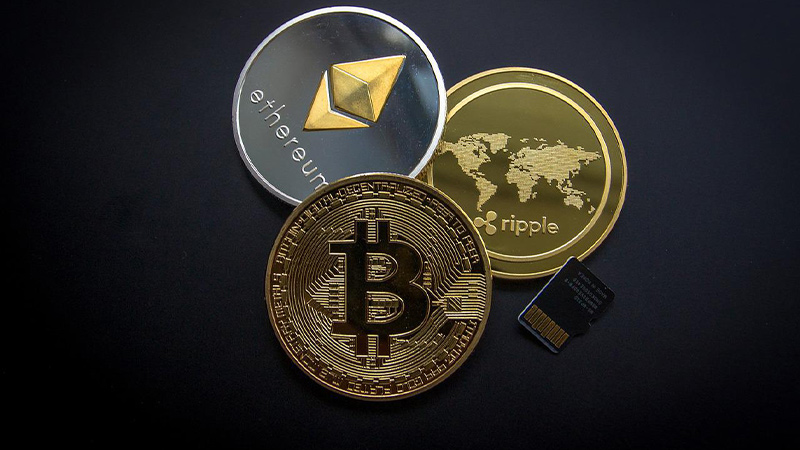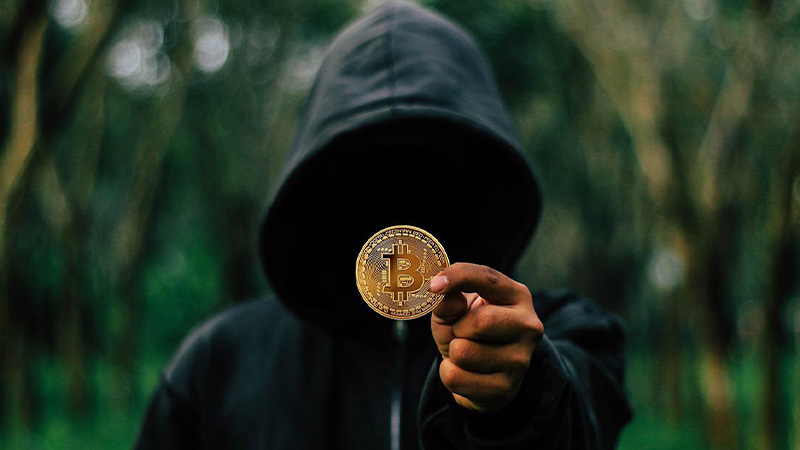The much talked about Polygon MATIC cryptocurrency platform is directed and discussed to provide a thorough guide to this relatively new kid on the block
Cryptocurrency first appeared in 1990. Digicash, owned by David Chaum, was the creator of eCash. Chaum developed what he called a "blinding formula" that encrypted information exchanged between individuals. Digicash went bankrupt in 1998, but other digital currencies later used some of its ideas, formulas, and encryption tools in their creations. There were several other attempts over the next 20 years before Bitcoin's creation in 2009.
E-Gold, tied to gold possession, arrived on the scene in 1996. Unfortunately, it became the tool of choice for illegal money launderers. Bit gold soon followed and used many of today's blockchain techniques. Hardcash arrived in the mid-90s. In many ways, Hardcash opened the door for many of today's cryptocurrencies. Additionally, B-Money came along in 1998 but soon failed. It was in many ways similar, though different from Bitcoin.

A cryptocurrency is a digital currency secured by cryptography. The properties of the crypto make it almost impossible to double-spend and counterfeit. These currencies are decentralized and based on blockchain technology, a kind of ledger backed by an extensive network of computers.
Cryptocurrencies are a new model for currency. They aim to make the transference of money faster and cheaper by streamlining existing financial architecture. The decentralized nature of the technology and architecture makes the transference of funds independent of banking and other institutions.
The idea behind a cryptocurrency is that it uses blockchain technology, which makes it very difficult to corrupt. Think of a blockchain as a sort of sophisticated Google Doc. When sharing a Google Doc, it goes "as is" rather than being copied. The doc is then stored in a decentralized chain accessible by everyone who has permission. Of course, a blockchain is more complicated and secure, but the ideas are similar.
The information in a blockchain consists of blocks, and each block is encrypted. The terminology takes a bit of getting used to, but blocks contain unique nonces and hashes. A nonce has 32 bits and a hash 256, resulting in 4 billion combinations.
To "break" the encryption, the block you are working on and every other subsequent block has to be changed. The numbers involved are simply enormous, which ensures the system's security. In addition, creating a new block within a chain requires mining.
[Enjoying this article? Check out our Guide to the Metaverse]

Your chosen cryptocurrency will use a particular blockchain. The term mining refers to the creation of a new block. The people doing this are known as miners. When creating a new block, the miner gives it a unique nonce and hash, which reference the previous hash. This is the essence of blockchain security.
Competition between miners solving the cryptographic algorithms and equations is known as "Proof of Work" and validates transactions earning blockchain rewards. "Proof of Stake" uses randomly chosen validators, ensuring that transactions are reliable and compensates them with cryptocurrency.
There are genuine environmental concerns. Mining some cryptocurrencies requires vast amounts of computing power. In the U.S. alone, Bitcoin mining produced an estimated 18 billion kilograms of Carbon Dioxide. Proof of Stake mining uses far less energy than proof of work. Ethereum, the second largest cryptocurrency, is working hard to change from proof of work to proof of stake. However, it is worth remembering, at this point, that maintaining fiat currency and our current banking system also has a significant negative impact on our environment.
Bitcoin was, of course, the first operational cryptocurrency. However, it is neither the only one nor the only type. Cryptocurrency can take the form of coins, nonfungible tokens or NFTs, payment tokens or altcoins, decentralized finance tokens, security tokens, utility tokens, and others. Let's take a look at some of them:
Utility tokens are a coupon or vouchers in the form of a digital unit representing a value on the blockchain. These tokens provide access to products or services operated by the issuer. By buying the token, you gain access at a particular redeemable value against the said products or services.
Payment tokens are used for buying and selling goods and services on digital platforms. Unlike traditional finance and banking, there is no intermediary with these tokens. While most security and utility cryptocurrencies and tokens fall into this category, not all utility tokens are payment tokens.
Security tokens are secured cryptocurrencies that get value from external assets. Furthermore, they are tradable as security. Security tokens are for purchasing properties, real estate, bonds, stocks, property, and even real-world currencies.
Nonfungible tokens are digital certificates of ownership of unique, non-replaceable items. These tokens are mainly used to represent works of art, videos, photos, audio files, collectibles, real estate, and much more. NFTs are a rapidly expanding form of cryptocurrency.
DeFi tokens are decentralized finance tokens, financial applications built on the blockchain. Furthermore, they are distributed and render financial control directly to the user. As a result, users can make transactions on a global scale.
Stablecoins are somewhat predictable as they retain the same value almost all the time. Value-stable assets such as fiat, back stablecoins. Meaning, for example, that there are U.S. dollar or Euro-backed stablecoins. Gold, other precious metals, oil, and other commodities back other stablecoins.
Privacy tokens use code that has even more privacy than mainstream cryptos. As a result, this type of cryptocurrency is useful for highly sensitive material. Unfortunately, they are the crypto of choice in the murky underworld of criminality.
There is no short answer to the question of cryptocurrency legality. The rules and laws governing change country by country. They are legal in the USA, the E.U., and the U.K. The U.S. Department of Treasury's Financial Crimes Enforcement Network defines cryptos as convertible currencies with an equivalent value to real currencies or ones that act as a substitute for real money. However, they are illegal in China and Russia and some Muslim countries, though not all. El Salvador was the first country to adopt Bitcoin as an official currency.
You must check on the legality of cryptocurrency in your country before you start trading. See a complete list of countries and their current status here.

The safest way to purchase and trade a cryptocurrency is by use of a hardware wallet. As the name suggests, these enable you to keep your cryptocurrency offline. With noncustodial wallets like Coinbase, you maintain complete control over your private keys.
Your public key enables other traders to do business with you. Your private key allows you to access all areas of your cryptocurrency wallet. It is vital that you quickly learn the difference between the two. Never share your private key with anyone.
Throughout 2022, all cryptocurrency has proved to be highly volatile. After the very high peaks in 2021, values dropped significantly but now appear to stabilize. In addition, there are now new cryptocurrencies arriving weekly. Here are five of the better-known ones:
Bitcoin
Bitcoin is the oldest and most valuable cryptocurrency. It has a market cap of $457 billion. Fortunes have been made and lost since Bitcoin first arrived in 2009. Satoshi Nakamoto, who remains a mysterious character, is alleged to have created Bitcoin.
Ethereum
The second biggest player in the crypto space, Ethereum, enables various functions, but its smart contracts help it become a very popular currency. The native cryptocurrency of the platform is called ETH or Ether. It has a market cap of $217 billion.
Solana
Solana was launched in 2020 and is a fast and robust platform. It has a market cap of $15 billion. The native currency is called SOL which has become one of the largest cryptocurrencies in the world.
Cardano
Cardano comes from one of the same people who gave the world Ethereum. It uses smart contracts which provide identity management. The currency is called ADA and has a market cap of $18 billion.
XRP
Goldman Sachs, Wells Fargo, and HSBC recognized XRP in 2022. The company, Ripple, launched XRP in 2012. Their ledger is an open-source technology and uses the consensus protocol. It has a market cap of $19 billion.
Undoubtedly the biggest pro of cryptocurrency is that the exchange and trading of money between two parties is utterly free of interference by a third party. Unlike traditional banking, nobody can cut off trading. It is transparent and anonymous. If used correctly, it is a very secure form of payment. Cryptocurrency is ideal for trading across international borders. In addition, it has the potential for extremely high profits.
There have been instances of theft from some platforms, particularly those that store your cryptocurrency remotely. For this reason, we recommend hard wallets. In addition, the volatility of some cryptos makes people wary of investing. Investors need to understand the intricacies of running a wallet fully. A silly mistake can cost you everything. The Financial Conduct Authority (FCA) does not regulate the cryptocurrency market. However, some see this as a positive rather than a negative.

Government
As local governments move into the 21st century, they are starting to adopt a more digital infrastructure. For example, Crypto would allow people without bank accounts or credit cards to pay digitally and free from charges. As a result, tax evasion and counterfeiting will become harder.
Trade Finance
There is no doubt that corporate clients see an improvement in trade finance deals with the adoption of cryptocurrency payments. The use of blockchain technology can be instrumental in optimizing business processes. Furthermore, it reduces implementation inefficiencies and redundancies.
Gaming
Gamers can now play on a global stage without exchange rate or security issues. Identity privacy is a huge plus, and restriction-free fund withdrawals are possible worldwide.
Supply Chain Logistics
This is one area where using cryptocurrency sees a significant improvement. The benefits are faster and more cost-efficient delivery of products while enhancing products' traceability. In addition, coordination between partners improves, facilitating easier financing access.
Banking
There is no doubt that banking institutions are starting to see Crypto as a secure method of payment transference. By using blockchain technology and stablecoins, they can speed up their payment processes. Blockchain is proving to be quicker and cheaper than clearing houses for processing transactions.
Healthcare
Both healthcare providers and patients can benefit from using cryptocurrencies in healthcare. Patients see an improved experience and better privacy. Blockchain technology is already accepted for secure data encryption and managing harmful disease outbreaks. In 2021 the Lancet conducted a systematic review of COVID and non-COVID-related applications of blockchain in health care. The study was very positive.
Education
Again, the Covid pandemic was a driving force in using blockchain in education. Blockchain hugely changed how students and teachers interacted and how they handled documents. For example, blockchain now helps issue digital certificates and diplomas, granting them instantly and effortlessly.
Smart Contracts
Smart contracts trigger into action when a transaction meets predetermined conditions. They enable the completion of a transaction in a way that satisfies all participants. No intermediary is required, and participants can be safe knowing that the outcome is guaranteed.
Art
Crypto digital art is bought and sold on a blockchain and represents a considerable market. Nonfungible tokens make it possible to purchase a piece of artwork that nobody can copy. At the same time, the artist can retain copyright and reproduction rights in the same way as with physical artwork. A good analogy is that in traditional artwork, anyone can buy a print of a Van Gogh painting, but there is only one original.
Energy
The energy sector now sees blockchain technology as a positive tool for recording and facilitating transacting between consumers and providers. Smart contracts can facilitate the sale of excess renewable energy between participants. Crypto technology makes green energy supply more efficient and is a great incentive moving forward.
Cybersecurity
By their very nature, blockchains carry a high level of security. Blockchains are resilient against attacks and maintain very high levels of integrity. Transactions are traceable, and the reduction of counterfeit is inherent. Sensitive data is protected, and it prevents identity theft.
It is not surprising that with so many different types of cryptocurrency, there are many different ways of purchasing it. Regarding actual asset payments, platforms offer purchases via bank transfers, credit cards, or crypto transfers. Trading crypto with cash in person-to-person transactions is also possible. Buying and selling Crypto on different platforms, however, can vary.
Digital crypto wallets are your key to crypto dealing; they offer proof that you are who you say you are. In addition, they facilitate transfers of cryptocurrencies. You can use your wallets on crypto exchanges, which enable online trading via apps. Like stocks and shares, crypto trading speculates current price movements.

It is important to remember that cryptocurrency markets are volatile, even more so than any other trading. Prices may go down as well as up. So be careful and learn as much about crypto markets in advance of investing. Here is a handy list of strategies:
1. Have a plan and stick to it
It would be best if you decided on what area of crypto interests you. The vast diversity in this technology means that researching everything will spread your knowledge too thinly. Instead, choose one that interests you, set a budget, and stick to it. Never fall into the habit of throwing good money after bad if trends take a downturn.
2. Diversify your portfolio
Resist the temptation of putting all your eggs in one basket. There are various currencies within each type. By spreading your investments over a few different ones, you will minimize the risks of losing money. Remember, changes happen swiftly, but you can trade in a flash.
3. Conduct thorough research
Conduct proper due diligence as you would with any other financial investment. Many trustworthy sites are giving good solid advice. Read and research as much as you can.
4. Focus on the long-term
Get-rich philosophies are not ideal for crypto trading. You must play the long game. When things take a dip, sometimes all you can do is calm down and wait for the inevitable upturn in the future.
5. Learn how to control FOMO and FUD
Fear of missing out (FOMO) is never a good thing to guide your investments. Social media can be a very tempting emotional driver. At the same time, it is vital to manage fear, uncertainty, and doubt (FUD). The best traders remove emotion from their dealings. Keep calm and keep a balance on your trading.
From the highs of 2021, cryptocurrencies took quite a hammering in the early part of 2022. Bitcoin and Ethereum lost more than half their value. Recently, however, things have stabilized and started to look positive again. Even experts disagree over where it is going, with some saying it has bottomed out and others saying it will drop further.
There will possibly be stricter regulations in the future of cryptocurrency dealing. Most experts see this as a positive step. Ben Weiss, CEO and co-founder of CoinFlip, a cryptocurrency buying platform, and crypto ATM network, states, "Sensible regulation is a win for everyone. It gives people more confidence in Crypto, but I think it's something we have to take our time on, and we have to get it right."
One thing is sure, though. Cryptocurrency is here to stay. Of course, there will likely be some bumps in the road ahead, but it looks like an exciting journey.
In our ongoing effort to help educate the world on crypto, NFTs, and blockchain, we publish weekly content focused on making the world of cryptocurrency accessible to everyone. Take a moment to follow us on Twitter for tons of informative articles, guides, and how-tos. You can also check out our one-of-a-kind NFT asset explorer for up-to-date NFT market data!
The much talked about Polygon MATIC cryptocurrency platform is directed and discussed to provide a thorough guide to this relatively new kid on the block
The ultimate guide to Bitcoin, its place in the cryptocurrency world, and how you can get involved should you wish. A comprehensive look at Bitcoin.